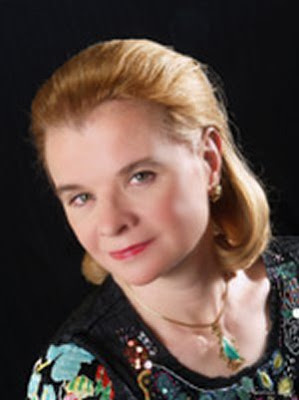By Greg Stepanich
BOCA RATON — Area concertgoers haven’t had enough opportunities in the past 10 years or so to hear live performances hereabouts of the symphonies of Dmitri Shostakovich, an important group of works whose best examples are likely to swell in stature as the years go by.
Now they can add another one to that small list, as Alexander Platt and the Boca Raton Symphonia gave a vivid, vigorous reading Sunday afternoon of the Russian composer’s Ninth Symphony (in E-flat, Op. 70), a short, chamber-style work exactly suited to the size and heft of the Symphonia. It could be argued that Platt’s programming of the piece, and his group’s fine execution of it, made a good case for smaller orchestras everywhere to add it to their usual stock of Mendelssohns, early Beethovens and Borodins.
Though the Ninth, written in 1945, doesn’t compare in size and force to works such as the Fifth or even the Tenth (which got a credible performance a couple years back from the Ly nn University Philharmonia), the Ninth is still quite difficult, with virtuoso-style chops needed for the violins and woodwinds in particular. That they were up to the challenge was apparent from the beginning, with the flutes throwing out all the sparkle and wit of this side of Shostakovich (above at right), and with a remarkably good high-stepping moment from a solo horn.
nn University Philharmonia), the Ninth is still quite difficult, with virtuoso-style chops needed for the violins and woodwinds in particular. That they were up to the challenge was apparent from the beginning, with the flutes throwing out all the sparkle and wit of this side of Shostakovich (above at right), and with a remarkably good high-stepping moment from a solo horn.
Platt’s tempo was swift and strong in the first movement, and nicely paced in the slower second movement, which despite an unfortunate cracked high clarinet note in the first pages had the right kind of moodiness and tension that this music demands, with the strings especially poignant as they took up the melodic burden. The woodwinds and trumpeter Jeffrey Kaye stood out in the impish third movement, as did the rest of the brass in the short fanfares of the fourth.
Some fine solo bassoon work led evocatively into the fifth-movement finale, which Platt began at quite a slow tempo, giving him and the orchestra plenty of room to wind up to the dash and exhilaration of the symphony’s closing pages. This was a sharp, smart, muscular interpretation of this terrific piece, and putting it on the program as the closing work made an even better argument for it.
The first half of the concert, held at the Roberts Theater on the campus of St. Andrew’s School, featured the American pianist Lydia Artymiw in the Piano Concerto No. 21 (in C, K. 467) of Mozart. Nearly five minutes were spent on stage in seriocomic fashion before the work began as Kaye, a technician and finally Artymiw herself labored to fix a recalcitrant music stand on the piano. Fortunately, this glitch didn’t spoil the listening mood for the audience, which is good because a subtle, elegant performance of the concerto soon unfolded.
Artymiw has a large, pretty sound and the technique to go with it, and she also showed she has good taste. One of the special beauties of the opening movement is its frequent mixing of major and minor keys, and in the first such such solo example, Artymiw made the most of it, lingering just enough on it to give it a good measure of Mozartean poetry. That provided excellent contrast with the even strings of sixteenth notes had to spin out for the rest of the movement, and it also hinted where the famous Andante would go.
That movement was notable for the deeply sensitive accompaniment of the orchestra; on the second go-round of the main theme, the pulsing strings were almost inaudible, which made for a lovely effect and also allowed Artymiw full rein to stress the embellishments. In the finale, Artymiw played with a gentle sparkle, and the Symphonia was appropriately restrained until the final measures. It was an admirable partnership of a fine soloist and a sensitive orchestra, and both served Mozart well.
The program opened with another work in C major, the First Symphony of Beethoven (Op. 21). Despite the last-minute loss of one of the first violins, the string sound here was full and confident, and the Symphonia gave the Beethoven a rendition that was sinewy in the first and third movements and sweetly charming in the second, without being too precious.
The finale was businesslike and less pointedly jokey than some performances I’ve heard, and it worked successfully. This reading was a perfect example of how exactly suited orchestras of the Symphonia’s size are for Beethoven’s first symphonic essays, and what it cannot match in a full-size group in sheer power it redeems in the inner strength and clarity with which it presents the music.
The most important aspect of this group’s work is its fresh programming, and the fifth-season brochure that was available Sunday promised more of the same next season, including a performance of the Capricorn Concerto of Samuel Barber and the Violin Concerto of Ned Rorem. Concertgoers by now should confidently expect that these works will be presented with respect and thorough preparation, and a larger eye toward expanding the repertory in general.
The Boca Raton Symphonia‘s final concert of the 2008-09 season is set for 2:30 p.m. April 19, and will feature violinist Charles Wetherbee in the Violin Concerto of the young American composer Jonathan Leshnoff. Also on the program are the Three Botticelli Pictures of Ottorino Resphighi and Beethoven’s Fifth Symphony (in C minor, Op. 67). Guest conductor for the concert at the Roberts Theater will be Laura Jackson. Tickets: $42-$53. Call 376-3848, 888-426-5577, or visit www.bocasymphonia.org.
